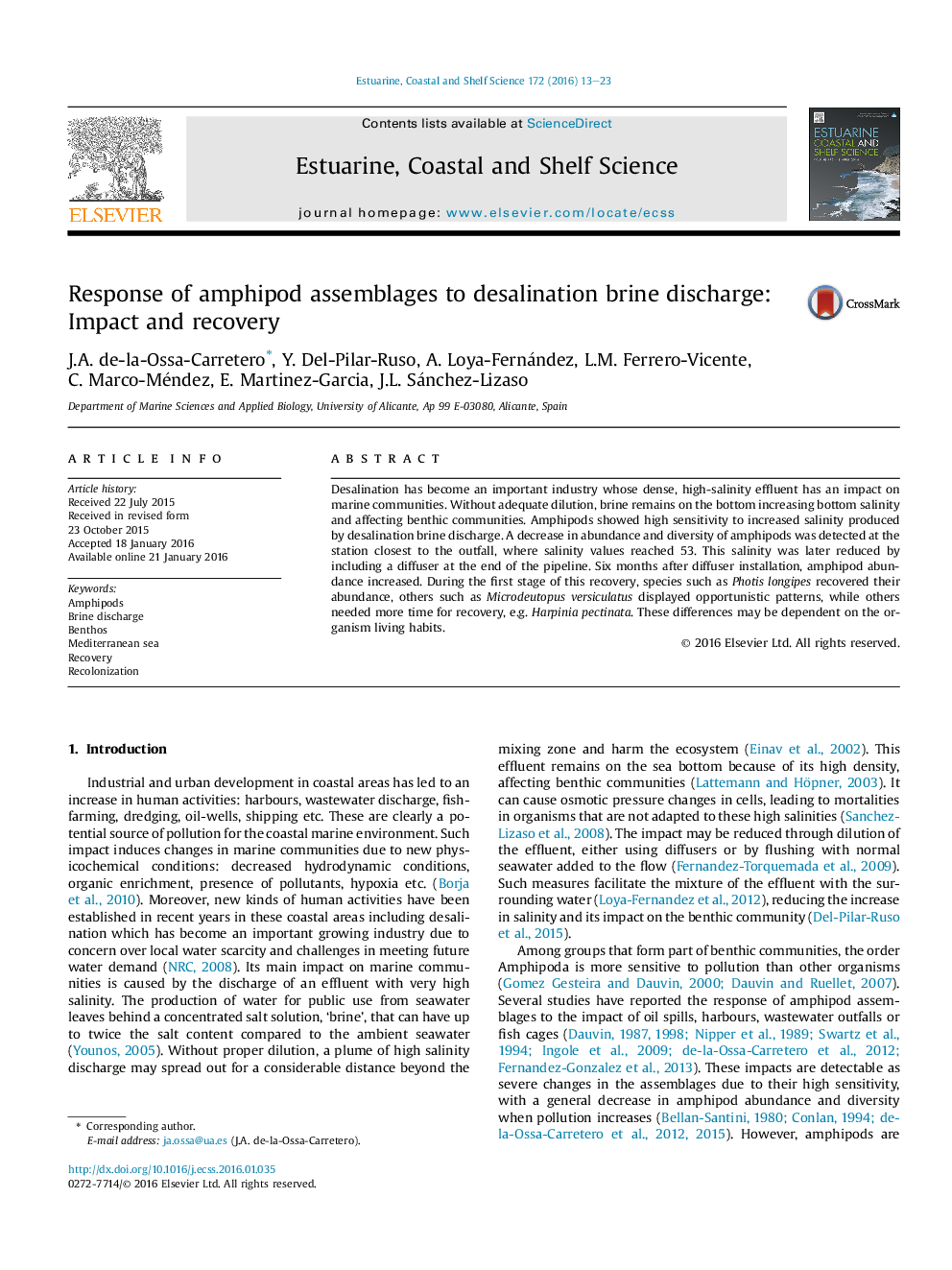| Article ID | Journal | Published Year | Pages | File Type |
|---|---|---|---|---|
| 4539305 | Estuarine, Coastal and Shelf Science | 2016 | 11 Pages |
Desalination has become an important industry whose dense, high-salinity effluent has an impact on marine communities. Without adequate dilution, brine remains on the bottom increasing bottom salinity and affecting benthic communities. Amphipods showed high sensitivity to increased salinity produced by desalination brine discharge. A decrease in abundance and diversity of amphipods was detected at the station closest to the outfall, where salinity values reached 53. This salinity was later reduced by including a diffuser at the end of the pipeline. Six months after diffuser installation, amphipod abundance increased. During the first stage of this recovery, species such as Photis longipes recovered their abundance, others such as Microdeutopus versiculatus displayed opportunistic patterns, while others needed more time for recovery, e.g. Harpinia pectinata. These differences may be dependent on the organism living habits.
